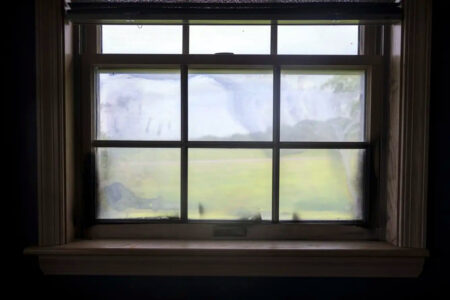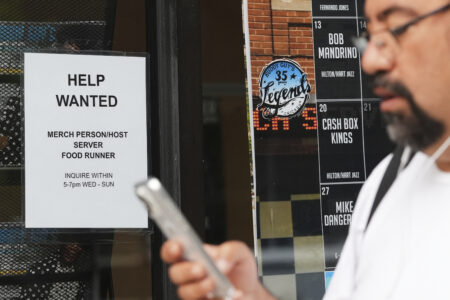Bellefonte to evaluate elementary schools, closures possible
BELLEFONTE — A public hearing was held in Bellefonte to discuss potential elementary school closures within the Bellefonte Area School District.
The meeting, held on Thursday, Sept. 26 at the Bellefonte Area Middle School cafeteria, was convened pursuant to the PA Public School Code, following a resolution passed earlier this month contemplating school closings.
The focus of the meeting was to present information on the condition of the district’s elementary schools and to gather public input on whether one or more of these schools should be closed or if other options should be explored. The discussion centered on the feasibility of maintaining or closing several aging facilities in the district, many of which have been deemed structurally deficient and costly to maintain.
Now that ground has broken on the district’s new, nearly $50 million elementary school project, administrators are considering closing one or more of the aging schools to maintain the district’s building inventory when the new facility is completed in Spring 2026.
Bellefonte’s former superintendent, Tammy Burnaford, who retired this summer, has accepted a consulting role with SiteLogIQ, the construction management firm behind the new Bellefonte Elementary School. Burnaford, who has been deeply involved in the project, provided attendees with context on how the new elementary school was developed and explained why the closure of an older building is under consideration.
“I was the superintendent at the time when this project started and actually when the discussion began, it was even before I was employed by Bellefonte,” Burnaford said. “It’s a discussion that’s been happening for 20 or 30 or 40 years.”
“We’ve known all along that our elementary schools are in poor condition,” she said.
Discussions on the board level date back to between 2008 to 2010, but progress began in earnest in 2016 with the feasibility study conducted by Crabtree, Rohrbaugh & Associates to assist the board, staff and community in making decisions on the future of the district’s buildings.
After a temporary pause due to COVID-19, discussions resumed and various analyses, including a 2022 architectural review by KCBA, assessed both short- and long-term solutions for the schools.
In the meeting, Damian Spahr, Bellefonte’s representative from SiteLogIQ, reviewed the results of the building analyses. He shared the Facility Condition Index scores for each building, along with SiteLogIQ’s recommendations.
The Facility Condition Index (FCI) score is calculated by dividing the cost of repairs and maintenance for a building by the cost of replacing it. A higher percentage indicates a more intensive recommended action, ranging from minimal current capital funding needed to the recommendation that the building be considered for closure or replacement.
“Every school district has buildings in all of these categories and that is what happens as you manage a building inventory in the Pennsylvania Public School (system),” said Spahr before going through the condition of the schools under consideration for closure.
Among the schools under consideration are Bellefonte Elementary, Benner Elementary, Pleasant Gap Elementary and Marion Walker Elementary. Each facility has significant structural and operational issues, as revealed by their Facility Conditions Index (FCI) scores.
“In the interest of transparency, it is the intention of the board to provide as much information as possible throughout this process,” Superintendent Dr. Roy Rakszawski, said. The meeting reflected this commitment, as Spahr detailed a comprehensive list of deficiencies of each building in the district. According to SiteLogIQ’s analysis, three of the four buildings are degraded to the point that they should be considered for closure.
Bellefonte
Elementary School
Bellefonte Elementary School, at 100 W Linn St. in Bellefonte, was built in 1942 and last renovated in 1964. Currently operating at 71.5 percent capacity, the 86,252-square-foot facility was given a 86.1% FCI score, and rated a 99 by SiteLogIQ for closing or replacement because of its extensive maintenance needs.
Though each of the four buildings has Pa. Safe School recommendations that could be implemented and none of the facilities fully meet Americans with Disabilities Act (ADA) building standards, Bellefonte Elementary School is the worst offender.
The school’s restrooms, cabinetry and railing systems all fail to meet ADA requirements, and the school lacks a fire suppression system and code compliant fire alarms.
Among the laundry list of recommendations to bring the school to modern standards, surveyors suggested replacing the door systems, drinking fountains, stage and theatrical equipment, sound systems, HVAC, all plumbing fixtures, pumps and piping, the sewage system and old electrical rigging.
The building’s masonry, asphalt and concrete features are deteriorating or damaged with cracking and spalling. This is in addition to the building’s framing and interior structure which require difficult, extensive renovation.
SiteLogIQ also recommended rearranging the main office’s layout to create a secure entrance vestibule, which the school currently lacks.
The school’s location, downtown, creates its own issues.
“If you drive past Bellefonte Elementary at about 2:30 everyday, you will see cars lined the whole way down the street because there isn’t an easy way to pick up students at Bellefonte Elementary,” said Burnaford, making clear there is no easy solution to such a problem.
With projected costs inflated to 2024 values, the study estimates long term maintenance would cost between $18,673,561 to $23,815,586. To replace the building with a new construction, it would cost between $32,775,760 and $36,225,840.
SiteLogIQ recommended that Bellefonte Elementary be considered first for closing.
Benner Elementary School
The school in second-worst condition is Benner Elementary. Built in 1961, with renovations completed in 1983, the school, which is the smallest at 28,781-square-feet, includes four modular classrooms and one learning support room. The school is currently at 95.8% capacity with 253 students.
With a FCI score of 77.4 percent, the building is recommended for closure or replacement, receiving a rating of 89 from SiteLogIQ.
To meet ADA standards, the building would need to add accessible walkways and ramps and be regraded to meet slope requirements. All restrooms would need to be updated alongside the school’s drinking fountains, railing systems and plumbing.
SiteLogIQ recommended replacing the building’s soffit, original interior finishes, cabinetry, theatrical equipment, HVAC system, lighting, sanitary sewer system and visual display equipment.
The school’s modular classrooms do not comply with the Pennsylvania Department of Education’s (PDE) standards for permanent construction.
Additional concerns were raised regarding exposed electrical conduits and wiring on the building’s exterior, which do not meet current construction standards. The school also lacks a fire suppression system.
The school also relies on noncompliant ventilation systems and inadequate, limited HVAC systems.
Doing maintenance and necessary repairs on the building is expected to cost between $6,170,736 and $7,237,776, whereas an entirely new build would cost only about $4.8 million more.
Spahr added, “Those are the basic building costs to replace. They don’t include demolition, they don’t include site work, they don’t include soft costs. That’s just the building replacement cost, so it’s a fraction of the overall cost.”
Pleasant Gap
Elementary School
Though originally built in 1950, the original wing of the building was demolished in 1976, so most of the building’s age can be dated to that renovation.
Currently at 88.9% capacity, the 37,557-square-foot school includes one Life Skills and three Learning Support rooms.
Given a FCI score of 72.2 percent, SiteLogIQ rated the building an 83, placing it third in priority to consider replacing.
In terms of ADA standards, the building would need to see the driveways, parking lots and walkways updated to accommodate people with limited mobility and the doorways, plumbing, rail systems and drinking fountains updated as they need to be in Bellefonte and Benner Elementary.
The rooftops electrical equipment and the building’s lintels and other ferrous metal items need to be replaced because they are outdated or deteriorated.
To address insulation issues, the building’s entire room system would need to be replaced. This is in addition to the soffit, cabinetry, electrical equipment, HVAC systems and aging and non-code compliant fixtures in need of upgrade and replacement.
To maintain the building and do any necessary repairs, it would cost between $1,345,188 to $1,717,872. To completely rebuild the building, it would cost upwards of $19,699,200.
To help those trying to understand the cost differentials, Spahr said, “It’s really the difference between — in your house — if you just replace your sink or you modernize your kitchen.”
Marion Walker
Elementary School
SiteLogIQ gave Marion Walker Elementary a rating of just 32, a significantly lower ranking than the other three elementary schools.
With a FCI score of 27.8%, the firm recommends the district focus on replacing the building’s systems as opposed to overhauling or closing the facility.
Though it was built in 1950, the building received its last update in 2007, making it the most recently renovated of the schools.
The 51,840-square-foot facility is currently at 81.5 percent capacity with 215 pupils.
The largest project the district was recommended to undertake at the school is the removal of the building’s modular classrooms, which were meant to be temporary but have become somewhat permanent fixtures.
The building needs the doorways and restrooms updated to meet ADA requirements, and there are needs for repairs on the building’s asphalt pads and masonry.
The firm also recommended the addition of a gymnasium.
In terms of maintenance, it would cost between $9,284,340 and $10,763,636 to bring the building up to modern standards.
A rebuild would cost between $14,271,660 and $15,773,940.
Community Response
While school closures typically evoke negative emotions among residents for a number of practical reasons, including lengthening student travel times and diminishing feelings of community, they also often stem from deep sentimental attachments. A look at the neighboring Jersey Shore Area School District, where residents are up-in-arms about the boards’ decision to consider the closure of Salladasburg Elementary, serves as a clear example.
In Bellefonte, however, the hearing was sparsely attended, with most of the audience made up of school board members. The audience at Thursday’s public hearing appeared open to all options, with the few attendees asking questions rather than using the opportunity to defend or condemn any specific building.
Dianna Danko, a parent and president of the PTA at Benner Elementary, questioned the wisdom of investing in PTA projects when the future of the school remains uncertain.
“It’s just hard as a PTA to figure out if we should pour money into the school if we don’t know what the school’s doing,” she said.
School Board President John Guizar said to Danko that the ultimate goal is to bring as much equity as possible to the district by doing whatever helps the most students within the confines of their budget.
“One building has this – another does not. It’s very inequitable, particularly when it comes to ADA compliance,” said Burnaford, noting the disparity in facilities between the district’s schools.
Board member Donna Smith asked what the Pennsylvania Department of Education likes to see school boards do. According to Spahr, PDE likes to see schools use their buildings to their fullest extent, and to build only when repairs no longer make financial sense.
“This district has been extraordinarily financially responsible. We said the last time that we built a new elementary school was in the 60s. Eventually you need to build new buildings, but PDE prefers the model that’s happening here at Bellefonte Area School District,” said Spahr.
Next steps
Attorney Carl Beard, of Beard Legal Group, informed attendees that a final decision regarding potential closures would likely not occur until January 2025. The district has a three-month window following the hearing to deliberate and gather additional input, with action possible as early as Dec. 26, 2024. However, because of the holiday season, the decision is likely to wait.
Ultimately, the board may choose to close, none, one or more than one school.
“At the end of the day, it can be more than one school. It can be two schools,” said Beard. “The board is receiving this information so they get to weigh it over the next three month period of time.”
Residents may submit feedback to the Bellefonte Area School District’s Board of Directors via email at publiccomment@basd.net with the subject line, “Comment for 780 Hearing.” Or, residents also may attend any of the upcoming public board meetings throughout the rest of the calendar year to voice their comments. The board will meet Oct. 1, Oct. 15, Nov. 6, Nov. 19 and Dec. 3 at 7 p.m.




